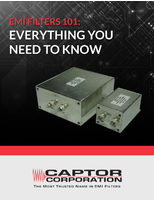Victrex® Peek Film Chosen For Thin Film Antennas Used In Electronic Devices
Greenville, SC < (February 8, 2006) < When TennVac of Vancouver,
Washington, was developing its Max-Antenna film technology (patent pending)
it created a unique Physical Vapor Deposition (PVD) process for selectively
placing metalized antenna patterns directly onto film and other substrates.
Thin film antennas are used in a wide variety of electronic applications
such as wireless LAN, Blue Tooth, GPS, RFID, Microwave, etc. to receive
signals of various frequencies. TennVac chose VICTREX PEEK film for its most
demanding antenna applications because of the polymer¹s broad range of high
performance properties such as tear strength, chemical resistance and
solderability.
According to Jeff Davis, Vice President for TennVac America, "Our PVD
process allows us to selectively place a metalized antenna pattern directly
onto VICTREX PEEK film. Because the process is done in an air-free
environment, we are able to apply multiple metal layers in a single
application, without any concern about oxidation on the inner layers. This
enables us to determine location, thickness and types of metals used based
on the requirements of the antenna, not the constraints of the process.
This means our customers can utilize highly conductive metals, such as
copper, for an inner layer in combination with a more rugged layer that can
be soldered such as tin."
A major advantage of this extremely low cost method of applying metals
is that "you don¹t melt the substrate," says Davis. "For example," he
says, "We can take the VICTREX PEEK film with an adhesive backing, metalize
it with an antenna pattern, and stamp it to whatever shape is required. Our
customers can then place the metalized adhesive film antenna directly onto
the device housing. The PVD process provides the RF engineer with maximum
flexibility to locate the antenna in the most advantageous location within
their system¹s housing."
Tear strength, flexural fatigue and high temperature properties were key
factors in choosing VICTREX PEEK film says Davis. "In certain applications
where the antenna is not attached to a rigid area, there is a definite
concern about ripping and tear strength is very important. Also, we have
some applications where the antenna must flex < as in a wearable device
where the antenna might be sewn into fabric or clothing < and this is where
flexural fatigue comes into play."
With a melting temperature of 343°C (649°F), VICTREX PEEK film can
withstand the high temperatures associated with soldering. "This is an
important property for us," says Davis. "We have numerous applications where
we solder directly onto the film < many films can¹t be soldered because they
have low melt temperatures."
Since the PVD process can be used to apply antenna to almost any
substrate, TennVac has plans to utilize the PVD process for applying
antennas directly onto housings made of VICTREX PEEK.
For additional information regarding Max-Antenna technology, please
contact Jeff Davis at 360-546-3824, or visit the TennVac website at
www.tennvac.com.
VICTREX USA Inc., a division of Victrex plc., is the sole manufacturer
and supplier of PEEK polymer worldwide. For more information on the
properties and performance advantages of VICTREX PEEK, please call (800)
VICTREX or visit the Victrex website at www.victrex.com.




